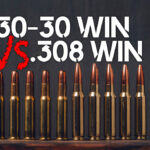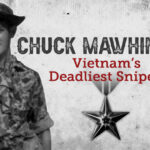

Comparing 300 Blackout VS 308 Winchester is tough as they are both versatile rounds. While the 300 Blackout is newer, it shares a similar origin story to the .308 Winchester. In both cases, the military was looking for modifications to current rounds. Below, we’ll talk about these rounds’ history and the best applications for each caliber.
The .308 and the 300 BLK are fundamentally different, so this won’t be a neck-in-neck discussion about which is better. Rather, this article will help people decide which one might suit them for their purposes.
Key Differences: 300 Blackout VS 308
What are the differences between the 300 BLK and the 308? It comes down to the size of the cartridge, the long-range capability, recoil, and more.
Differences between 300 Blackout VS 308:
- Cartridge Size (308 is larger)
- Power (308 is faster)
- Long Range (308 has better range)
- Recoil (300 Blackout has less)
- Price & Availability (300 Blackout is slightly cheaper. 308 more available)
Let’s look at these in more depth.
Case Size Comparison
The .308 Win is larger than the 300 BLK, yet smaller than the 30-06 despite all three using the same bullet. Although .308 Win uses the same projectile, the casing holds significantly more powder. This increase in case size is the main difference between the 300 BLK, and it allows the .308 Win to send bullets faster and further.
Cartridge Size Comparison: 300 blackout VS 308
In this section, we’ll look at some of the specs on the cartridge size for the 300 Blackout VS 308.
| Cartridge Specs | .300 AAC Blackout | .308 Win |
|---|---|---|
| Parent Casing | .221 Fireball/.223 Rem | .300 Savage |
| Bullet Diameter | .308″ | .308″ |
| Neck Diameter | .334″ | .3433″ |
| Base Diameter | .376″ | .4709″ |
| Case Length | 1.368″ | 2.015″ |
| Overall Length | 2.26″ | 2.8″ |
| Grain Weight | 90gr-220gr | 110gr-180gr |
| Max Pressure (SAMMI) | 55,000 PSI | 62,000 PSI |
Dimensions for the 308 Win:

The .308 Winchester is a centerfire cartridge with a larger powder capacity compared to the .300 AAC Blackout.
- Designed: 1952
- Designer: Winchester Repeating Arms Company
- Type: Rimless, Bottleneck Centerfire
- Case capacity: 56 grH2O
Dimensions for the 300 Blackout:
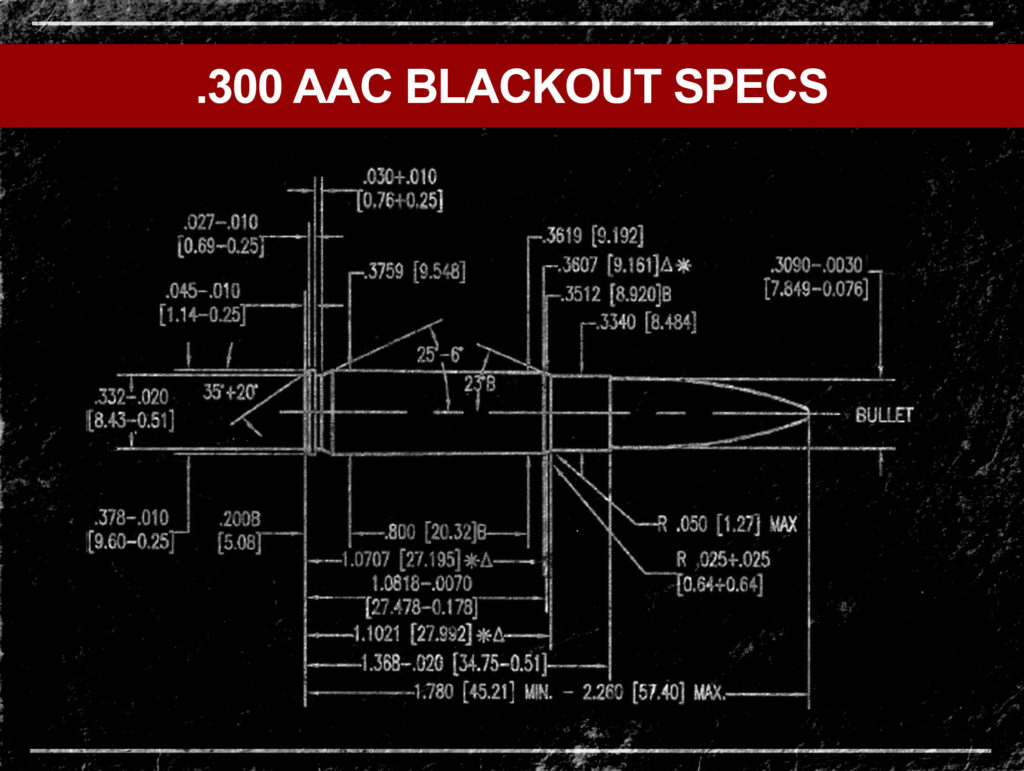
.300 AAC Blackout has the same bullet diameter as the .308 Win., however, its shorter case makes it the same length as .223 Rem.
- Designed: 2009
- Designer: Advanced Armament Corporation
- Type: Rimless, Bottleneck Centerfire
- Case capacity: 19.2 grH2O
Note: The 300 BLK and the 308 are not compatible cartridges, meaning you cannot interchange the rounds between rifles. Yes, the bullets are the same size, but the casings are very different. Experienced gun owners know this, but it’s a question that may arise for those who are unfamiliar.
300 Blackout VS 308
In the world of calibers, it’s important not to get lost in the forest of specifications and “possibilities.” That doesn’t mean we should ignore specifications. However, it’s often wise to step back and look at the big picture. As we discuss the .308 and the 300 Blackout, let’s start with the wide scope and then dial it in.
The .308 is popular as a hunting cartridge, with medium to big-game being primary uses. On the tactical side, the .308 is commonly used as a sniper cartridge, though larger cartridges, such as the .300 Win Mag, are often preferred by the military.
The 300 Blackout is the new kid in the tactical world. It’s specially adapted for stopping power in close-quarters combat. Also, the 300 Blackout was streamlined to work well with suppressors and subsonic ammunition.
So, there it is: the .308 is the golden child of hunting rifles, and the 300 Blackout takes the blue ribbon for tactical close-quarters environments.
Sure, you could use a .308 for close-quarters combat. And you could use a 300 blackout for medium game hunting, but this is like using a kitchen knife to baton firewood and a survival knife to slice onions: you can do both with either tool, but you may be drifting from the intended purpose.
However, there are serious nuances to these generalizations. One of the coolest things about the 300 Blackout and the .308 is their overall versatility. As we discuss the history of these rounds, their intended purpose should become clear.
300 Blackout History
The 300 Blackout cartridge has been a mainstay since its introduction over a decade ago. SAAMI approved it into the record of official rounds in 2011. The 300 Blackout is the epitome of hybrid, maybe even stealing that title from your cousin’s Toyota Prius.
How did the 300 Blackout begin? The military was dissatisfied with the close quarter’s capability of the 5.56 NATO, finding it lacked some punch and was difficult to suppress. Military personnel wanted something with similar ballistics to the AK-47’s 7.62x39mm.
The 300 Blackout is a shortened 5.56 (.223) casing with a .30 caliber bullet. That’s about the only similarity between the .308 and the 300 Blackout: they have the same bullet. 2011 wasn’t the first time the 300 Blackout appeared, at least not with that name. Before 2011, the 300 Blackout was a rogue cartridge known as the “300 Whisper.”
Now, let’s hand the microphone to the .308 Winchester.
.308 Winchester (7.62 NATO) History
In the 1950s, the .308 was born as the civilian version of the 7.62 NATO. The military wanted a shorter version of the 30-06 for use in automatic weapons, without losing much power. It’s rather funny that the 300 Blackout was born from the military wanting slightly more power in the same package, and the .308 was born from the military wanting a slightly smaller package with the same power.
The .308 has seen military use in automatic machine guns and sniper rifles, though it really found a home in hunters. The .308 offered long-range stopping power without the kick of the .30-06.
Now that you know how these rounds were born, let’s break down the advantages and disadvantages of each rifle.
Strengths & Weakness Of 300 Blackout
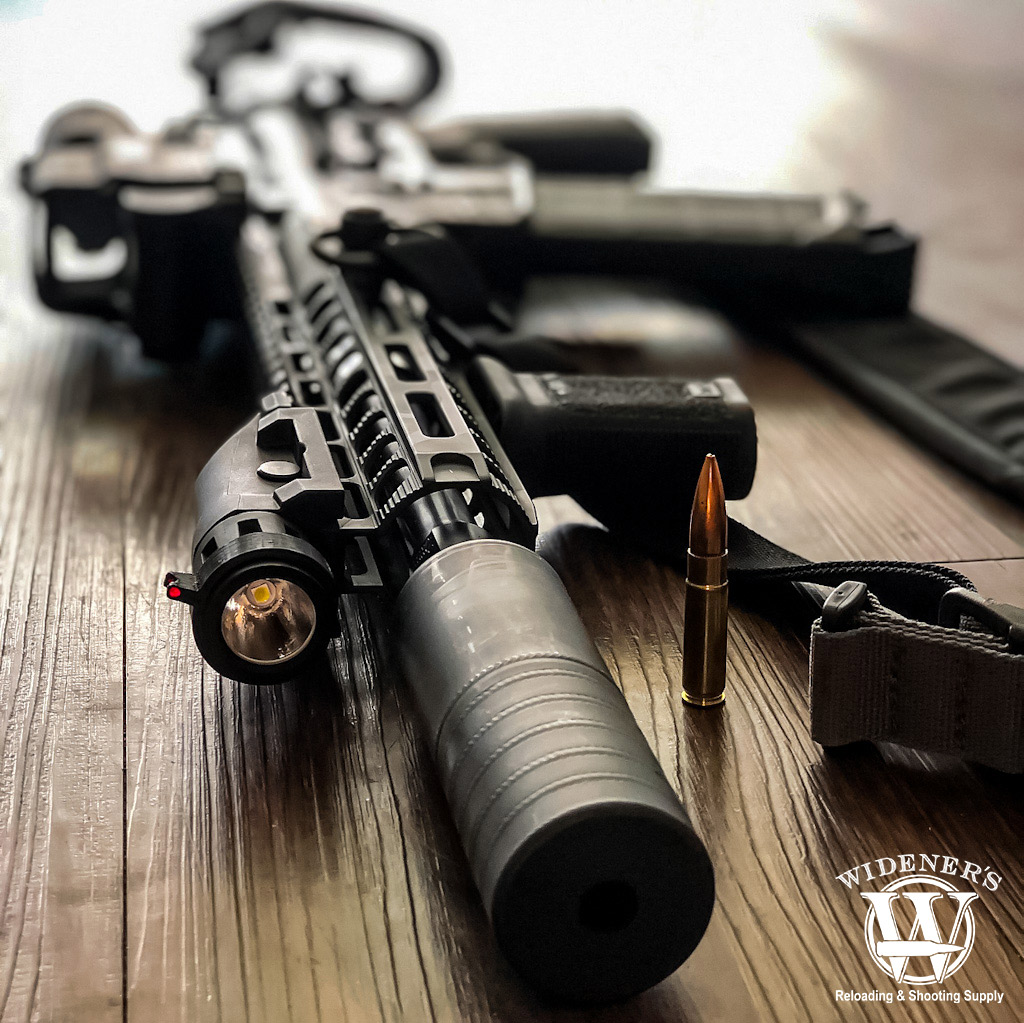
300 Blackout operates on the popular AR-15 platform, you can even use standard magazines.
The 300 Blackout (BLK) has garnered much attention over the past several years. The 300 BLK is interesting in appearance (there’s something unique about the large bullet on the smaller cartridge) and function. There’s a reason for that, the 300 BLK can handle heavy subsonic rounds that a .308 could have trouble reliably cycling.
Here are some of the strengths of the 300 BLK:
- Small package power
- Works with AR-15 lowers
- Great for suppressed rounds
- Optimized for short barrels
Let’s look at these closer. If you’re curious to get further details, read our article about the best 300 Blackout ammunition.
The 300 Blackout: .30 Caliber Power
The 300 blackout launches .30 caliber projectiles with a very controllable kick. When using supersonic ammunition, you’re looking at solid power without paying the price with shoulder-numbing recoil.
The 300 Blackout is ballistically similar to the 7.62×39 (many AK-47 rounds). Though it’s not going to carry the energy of the .308, it performs its job well: packing a punch in close quarters.
AR-15 Lower Compatibility
The 300 BLK uses the same casing diameter as the 5.56 NAT0. So, you can convert AR-15s into 300 blackouts by swapping uppers. However, you cannot fire a 300 Blackout through a .223 chamber, as the bullet is too large for the barrel – dangerous!
However, if you’re an AR-15 person, the 300 Blackout will provide many options.
Running 300 Blackout Suppressed
Many people joke about Hollywood weapon suppression, mocking the unrealistic nature of most quiet guns in the movies. However, with the 300 Blackout, you can get very quiet. If you use subsonic ammunition and a suppressor, the loudest thing you’ll hear is the bullet striking the steel target.
Of course, you lose energy with the subsonic ammunition, but that’s not a huge problem for home defense and certain covert military operations. Let’s talk about 300 Blackout barrel lengths.
Built For Shorter Barrels
The 300 Blackout powder is formulated to require less than 10-inches to burn fully. What does this mean? It means that longer barrels are less important for 300 Blackout in velocity and muzzle flash. The 300 Blackout gives you plenty of pop and concealment with a shorter barrel.
Let’s address the downsides.
Weaknesses Of The 300 Blackout
We’ll list some potential downsides, but you’ll have to consider these based on your specific needs.
Downsides to the 300 Blackout:
- Limited ranges. Yes, you can get out to 400 yards with regular ammunition, but you’ll still have significant bullet drop, and compared to the 308, you’re just not going to get the power.
- Ammunition limitations. This will fluctuate, but recently, 300 Blackout has been more expensive than 308. And, if you’re talking availability, you can’t find 300 Blackout under every rock (like you can with .308).
Alright, time to look at the .308 Winchester.
Strengths & Weaknesses Of .308
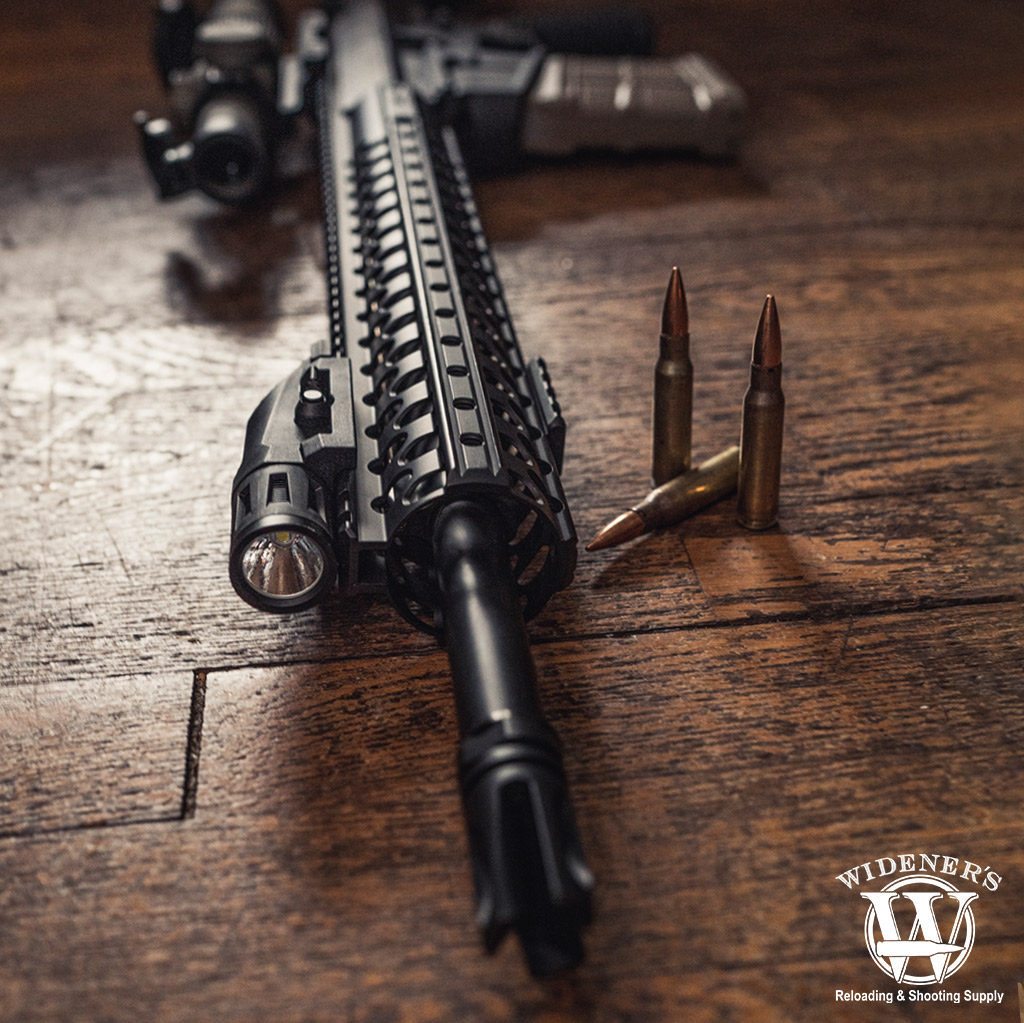
The .308 Win runs on the larger AR-10 platform, which uses SR-25, AR-10, or LR-308 style magazines, depending on the gun.
Time to look at the pros of the .308 Winchester, then we’ll address some weaknesses.
Pros to the 308:
- Long-range power with minimal kick
- Bullet availability and versatility
- Automatic capability
Let’s give these more context.
The .308 Has Long Range Power
With the 308, you don’t get the horse kick of other high-power .30s, but you still get most of the power, making it a comfortable weapon to use while still cleanly harvesting game at longer ranges.
Availability And Versatility Of .308
The .308 is widely popular, which means that you can find this ammunition just about anywhere. From your urban big box stores to your rural gas station/gun shops. Also, the .308 can safely fire the 7.62 NATO, as the two are nearly identical.
Note: Double-check your weapon before firing .308 in a 7.62. Not all 7.62 NATO chambers are made to take .308, though many modern guns don’t have issues.
The .308 Has Automatic Rifle Capability
Yes, the .308 is common in bolt-action rifles, but you can also find it in AR-styled weapons, like the AR-10. Unlike the similar 30-06, which is harder to find in semi-automatic styles. Now, let’s talk about a few downsides.
Take some time to read about the best 308 ammunition for hunting, match, and target shooting.
Weaknesses Of The .308
- Not well adapted for close quarters. In this regard, it’s hard for the .308 to compete with the modern 300 Blackout. The .308 will be louder, with less controlled penetration.
- Incompatible with AR-15. This isn’t a huge issue for some, but for those who’ve already adopted the AR-15, if you want .308, you’ll need an entirely new rifle; if you want 300 Blackout, you just need to change the upper.
There’s a group of people who love the .308 for its versatility, and then there are those who prefer something more specialized – it all depends on who you are.
Ballistics: 300 Blackout VS 308

Which is which? The .300 ACC Blackout (Left), and the .308 Win (Right).
Let’s compare the .308 and the 300 Blackout bullet grains, velocity, and foot-pounds. This is just a general reference. As you know, there are many variations based on the atmosphere, weather, barrel length, and ammunition choice.
For the .308, you’re looking at common bullet weights of 150-180 grains. At longer ranges, the 308 has less bullet drop and more energy across the board than the 300 Blackout. Though it varies, with 150-180 grain bullets, the .308 offers a velocity of 2000 FPS and energy of 1200-1700 Ft/lbs. at 300 yards.
On the other hand, the 300 blackout remains a nice round up to 200 yards; but once you get further, you start to really lose both power and trajectory. With 125-grain bullets, you’re looking at about 1600 FPS and 800 Ft/lbs. at 300 rounds.
Again, it’s all about your purpose. Some people need running shoes; others need hiking boots.
150gr FMJ Comparison
It’s easy to see that the .308 Win cartridge blazes past the .300 BLK when loaded with the same 150gr FMJ bullet. At close ranges, the .300 BLK bullet is still a formidable threat. There’s an argument to be made that it is viable out to 200 yards, but it’s not performing at the level of the .308 Win. At distance, the .308 Win reigns supreme, with an 8″ drop at 300 yards, versus a 19.3″ drop on the .300 BLK at the same range.
| Caliber | Bullet Type | Bullet Weight | Velocity (Muzzle) | Energy (Muzzle) | 100 Yards (Velocity/Energy) | 200 Yards (Velocity/Energy) | 300 Yards (Velocity/Energy) |
|---|---|---|---|---|---|---|---|
| .300 AAC BLK | FMJ | 150gr | 1,900 FPS | 1,202 FT LBS | 1,724 FPS/990 FT LBS | 1,561 FPS/811 FT LBS | 1,411 FPS/663 FT LBS |
| .308 Win | FMJ | 150gr | 2,820 FPS | 2,648 FT LBS | 2,597 FPS/2,246 FT LBS | 2,385 FPS/1,894 FT LBS | 2,183 FPS/1,586 FT LBS |
OTM Comparison (For Suppressed)
When it comes to running suppressed for close-quarters combat, .300 BLK is the logical choice. With sub-sonic ammo, its performance is undeniable. In fact, if you’re running a suppressed short-barrel rifle, you could say that it’s the only cartridge that performs as advertised. While .308 can be suppressed, it’s unlikely that you’ll be able to get it to run as quietly as the .300 BLK. There’s too much extra powder in the .308 Win cartridge, which, again, benefits its performance at distances.
| Caliber | Bullet Type | Bullet Weight | Velocity (Muzzle) | Energy (Muzzle) | 100 Yards (Velocity/Energy) | 200 Yards (Velocity/Energy) | 300 Yards (Velocity/Energy) |
|---|---|---|---|---|---|---|---|
| .300 AAC BLK | OTM | 220gr | 1,000 FPS | 488 FT LBS | 970 FPS/460 FT LBS | 944 FPS/435 FT LBS | 920 FPS/413 FT LBS |
| .308 Win | OTM | 185gr | 2,600 FPS | 2,777 FT LBS | 2,442 FPS/2,449 FT LBS | 2,289 FPS/2,153 FT LBS | 2,143 FPS/1,886 FT LBS |
Ballistic numbers will vary based on the ammunition, range conditions, and the barrel length (24″ test barrel used for the data above).
Pricing Considerations
On average, 300 BLK ammo is a few dollars cheaper than comparable .308 Win ammo. When you start getting into match-grade loads there are exceptions both ways. Neither round is considered to be a budget cartridge. .308 Win is more readily available on the market and you can find deals on surplus .308 Win in bulk quantities. However, don’t expect to find them in 300 BLK. If you plan on building or buying a rifle chambered in either caliber, be sure to include a budget for ammo in your plans.
You can find bolt action, and semi-auto guns chambered in both calibers. Again, there are more rifles chambered in .308 Win on the market, but if you like to build, there are a ton of options for 300 BLK. If you’re in the market for something short-barreled, there are a lot of fun-sized possibilities ready to go for 300 BLK. Expect to pay a premium for a quality gun in either caliber, however, expect to pay more if that caliber is .308 Win.
Final Showdown: 300 Blackout VS 308

If running suppressed is your #1 goal, go with 300 BLK. For hitting targets hard at distances, the .308 Win is a better option.
In general, the .308 will be the practical choice for long-range shooting and big game hunters. Though, if you desire, you can place it in an AR-10 and use it for more tactical applications.
On the other hand, 300 Blackout is probably the more obvious choice for self-defense and close-quarters situations. However, you can certainly use it for medium game hunting if you so desire.
Both the .308 and the 300 blackouts are solid rounds. Both will make you proud when used for their intended applications. For more reading, check out our article on the 300 blackout barrel lengths and ballistics.


